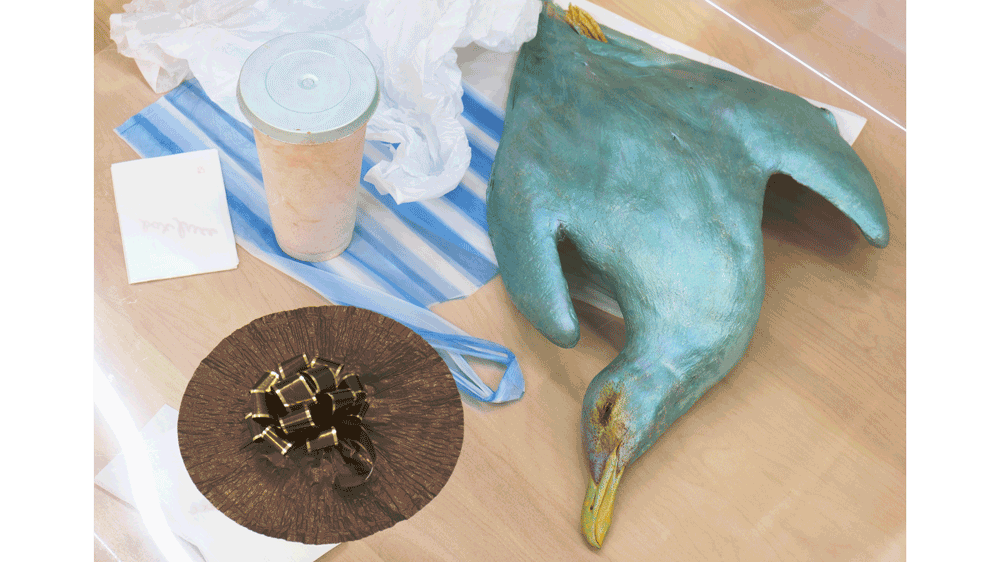

This fall and winter, Toronto’s Museum of Contemporary Art is a must-visit destination for any art-viewing excursion. Located in the newest gallery district in the west end of the city, MOCA Toronto is easy to get to by subway, bus, car, or bike. At the museum, visitors will experience the work of two internationally celebrated artists, Phyllida Barlow and Liz Magor, whose upcoming exhibitions offer distinct and bold approaches to sculpture. Also on view is a selection of work from The Wedge Collection, one of Canada’s largest private collections, which engages with Black identity and African diasporic culture. All three exhibitions are on view at MOCA from Sept. 7, 2023, through Feb. 4, 2024.
British artist Phyllida Barlow’s immense sculptures and bold drawings will be on view in “Eleven Columns,” a solo exhibition installed on the museum’s ground floor.
For more than 50 years, Barlow took inspiration from her surroundings to create imposing installations that can be at once menacing and playful. She created anti-monumental sculptures from inexpensive, low-grade materials such as cardboard, fabric, plywood, polystyrene, scrim, and cement. These constructions were often painted in industrial or vibrant colours, the seams of their construction left at times visible, revealing the means of their making.
When Barlow passed away in early 2023, she was working closely with MOCA on a site-specific installation for the show. Having visited the building some years earlier, Barlow was taken by its industrial vigor and, in particular, the impressive columns paced throughout the museum’s ground floor. Co-curated by November Paynter and Rui Mateus Amaral, “Eleven Columns” brings together a selection of works that Barlow chose in discussion with the MOCA team. Acknowledging her enthusiasm for the museum’s distinct architecture, the show includes untitled: eleven columns, standing, fallen, broken (2011) and a collection of works on paper.

Canadian artist Liz Magor has produced one of her most significant commissions to date for “The Separation,” her solo exhibition on view on MOCA’s second floor. Magor folds organic and synthetic source materials into lustrous artworks that evoke the melancholy and the absurd. Attentive to the physicality of an object, she casts and organizes found material so that intense narratives of dependency and desire can emerge. At times sarcastic and sympathetic, Magor’s sculptures spark questions about our belief and emotional investment in the material world.
Curated by Rui Mateus Amaral, “The Separation” emphasizes the tensions in Magor’s work, playing rough against refined, flimsy against sturdy, fashionable against passé, and custom-made against mass-produced. Across the museum’s second floor are varying moments of suspense: objects intercepting one another as they slip, tumble, or fall—from physical safety and public favor. Borrowing from the complexity of sculpture, the exhibition invites the viewer to look and relook at their familiar surroundings.
“Dancing in the Light,” on the museum’s third floor, animates the rich tones and textures of contemporary Black life through portraiture. Established by Kenneth Montague in 1997, The Wedge Collection is one of Canada’s largest private collections of visual art that engages with Black identity and African diasporic culture. The exhibitionis part two in MOCA’s ongoing series “The City is a Collection,” which brings some of Toronto’s most engaging private collections to the public.

Featuring the work of 41 artists including Oreka James, Carrie Mae Weems, Jonathan Lyndon Chase, and Lynette Yiadom-Boakye, “Dancing in the Light”examines portraiture across a variety of mediums as a way of entering into a more nuanced consideration of contemporary Black life. Rethinking moments of stillness and vulnerability as instances of strength, the exhibition works against the flattened and commodified image of Blackness so often experienced within art history and popular visual culture. Curated and designed by Farida Abu-Bakare and Kate Wong, “Dancing in the Light”is conceived of as a capacious place for gathering and study, offering visitors comfortable seating and an array of books and music to explore.
MOCA’s site-specific Lightbox commission, located on the museum’s northwest façade, is a work by Isabel Okoro and is part of “Dancing in the Light.”
Visitors can also enjoy artist talks, exhibition tours, Free Friday Nights powered by Scotiabank, children’s workshops on TD Community Sundays, and other public programs.
MOCA Toronto’s fall season exhibitions are on view Sept. 7, 2023, through Feb. 4, 2024. Information is available at moca.ca.